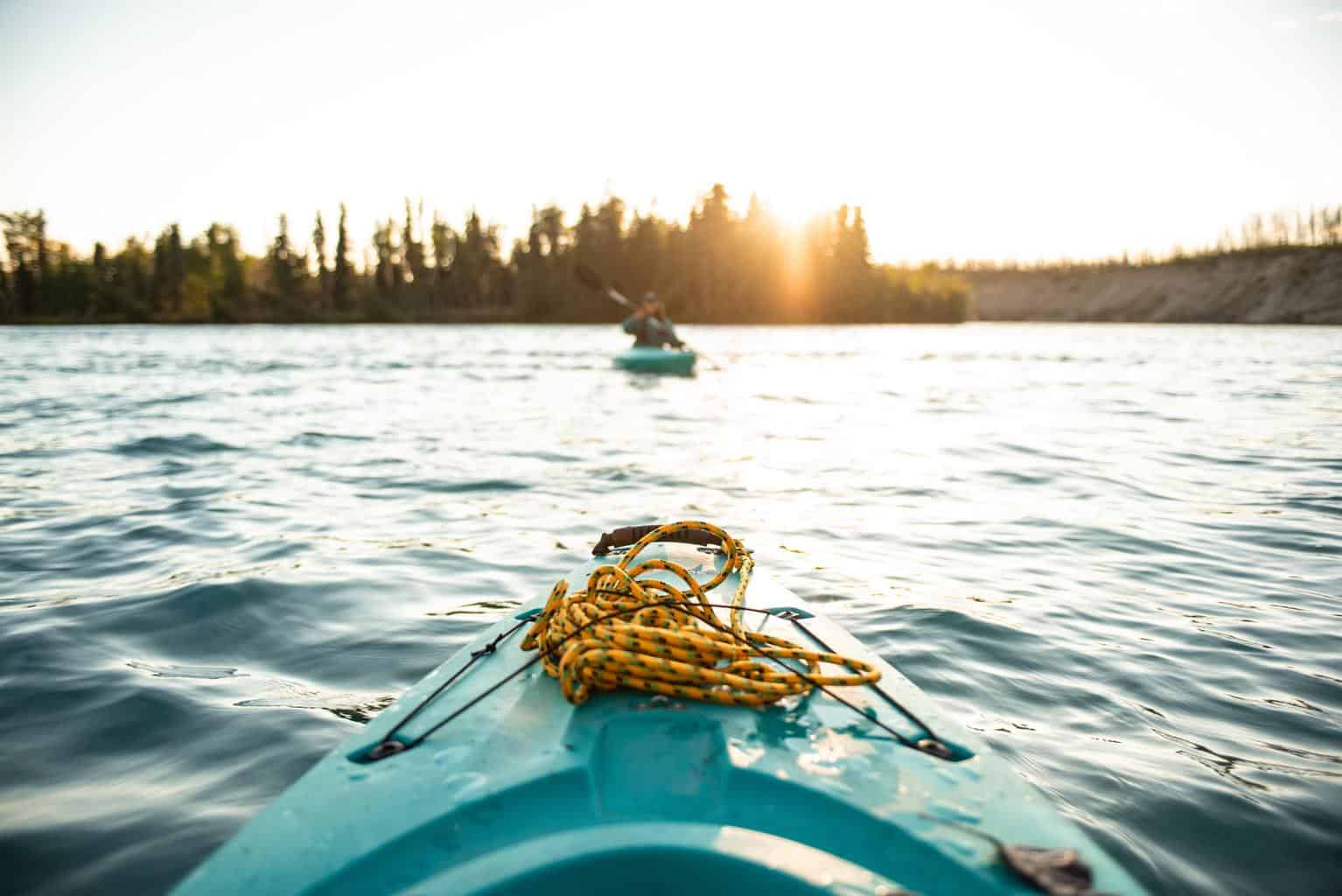Does the idea of paddling a kayak around a lake seem fun but a little scary at the same time?
People who are new to kayaking often wonder about where the safest places are to practice their new skills.
Kayaking on a lake is relatively safe, but there are still a few risks involved. The level of danger that you’ll face on a lake depends upon multiple factors such as the weather and water conditions.
Learning more about the things that you will encounter while kayaking in a lake environment helps you enjoy a worry-free day.
- Can Beginners Kayak On a Lake?
- Are Kids Safe Kayaking On Calm Lakes?
- What Dangers Exist for Kayakers On the Water?
- Are Some Lakes Safer Than Others?
- Is It Safe to Kayak Alone On a Busy Lake?
- How Do You Increase Your Visibility to Other Boaters?
- Can You Kayak On a Lake at Night?
- Are Animal Attacks On Kayakers Common On Lakes?
- What Conditions Are Right for Lake Kayaking?
- How Do You Detect Weather Changes On the Water?
- What Do You Do If Unexpected Bad Weather Arrives?
- How Do You Handle Falling Out of Your Kayak?
- What Other Dangers Do You Face On the Lake?
- Are Safety Regulations In Place for Specific Lakes?
- What Types of Safety Gear Do You Need to Take?
- Do You Need a Float Plan If You Are Kayaking On a Local Lake?
- Conclusion
- You Might Also Like…
Disclosure: this post contains affiliate links (clearly marked with ), which means we may earn a commission if you buy something through them, at no additional cost to you.
Can Beginners Kayak On a Lake?
Lakes are where many beginner kayakers first learn how to paddle their boat. Many kayaking lessons take place at lakes where there is enough room for everyone to explore the water.
As a beginner, you can choose to practice your skills along the shoreline where the water is usually shallower.
You’ll also want to go with a buddy and remember to only paddle out as far as you could realistically swim back.
Are Kids Safe Kayaking On Calm Lakes?
Kayaking with your children is a wonderful way to help them learn to love watersports.
Starting them out on a calm lake lets them feel like they are on a big adventure, but you’ll want to take a few precautions.
Unless your kid has been kayaking before, it may be best to have them ride with you in a tandem kayak. Even with experience, most children aren’t quite ready for their own kayak until they are around 10 years old.
You’ll also want to double-check the water conditions and keep your trip short. Staying close to the shore means that you can quickly end your adventure if your kid gets too tired.
Many families choose to carry a tow line that they can use to keep their kayaks together. Being prepared to tow a tired child back to sure is always a good rule of thumb to follow.
What Dangers Exist for Kayakers On the Water?
Lakes have some of the same dangers that you would expect to encounter on any body of water.
Currents and waves are the two biggest potential dangers that you need to know about as a kayaker.
Currents are areas where water flows in a specific direction. A current can occur on the surface of the water or deeper.
Currents can be extremely strong, and they are often listed as dangerous once they reach 2 mph.
Strong currents pose a risk to you in the kayak if they pull you further from the shore than you planned to go. They can also be extremely dangerous if you get caught in one after falling out of your kayak.
The majority of lakes only generate small waves and choppy water that most kayakers can handle. However, even a small wave could knock you off of your kayak if you are not prepared.
If you plan to kayak on a large lake, then you’ll need to be more concerned about waves. On Lake Michigan, the largest wave on record reached 23 feet, which would be extremely difficult to navigate on a kayak.
Waves of that size are rare and not something that you’ll likely need to worry about. Large and popular lakes also tend to have warnings issued when currents or waves are at dangerous levels.
Are Some Lakes Safer Than Others?
Lake Michigan is known for being the deadliest out of the Great Lakes. The risk of drowning there increases dramatically once the waves reach three to six feet high.
Fortunately, there are many lakes all over the world that are well-suited for kayakers who just want to enjoy an easy to moderate day on the water.
Look for small lakes that do not feed into or from large rivers.
When you are on a lake that is designated as safe, you’ll still want to remember that all lakes contain risks for kayakers. Remember to follow the basic safety practices even when the lake is completely calm.
Is It Safe to Kayak Alone On a Busy Lake?
Many lakes are hot spots for people who enjoy recreational activities on the water. It can be tempting to choose to go kayaking alone when you feel like there are so many people around.
While most boaters will quickly help anyone out in an emergency, they may not know to be looking for you.
Ideally, you should always plan to kayak with at least one other person who is committed to you two watching out for each other.
Kayaking with a group of people on a busy lake also helps to make sure that other boaters notice you.
How Do You Increase Your Visibility to Other Boaters?
One of the dangers that you face in a lake is the possibility that a fast-moving motorboat operator might not see you.
Making sure that other boaters are aware of your presence keeps you safe from collisions.
Most boaters will also slow down to prevent hitting your kayak with the wake if they see you ahead of time.
Group kayaking isn’t the only way to increase your visibility to boaters. When you shop for a kayak, look for ones in bright and bold colors that stand out from the water.
You can also wear clothing made from fabrics in eye-catching colors such as neon green. Reflective tape is another high visibility item to add to a shopping list.
You can put reflective tape on your boat and on clothing to make it easier to see you during the dawn and dusk hours.
High visibility flags are easy to mount on your kayak. In some locations, these may be a requirement.
In areas where they are not, using a flag helps to elevate the line of sight for your kayak so that other boaters are more likely to notice you.
Can You Kayak On a Lake at Night?
Night kayaking has some benefits such as being able to stargaze from the comfort of your boat.
People who use kayaks for fishing tend to love heading out during dawn or dusk when fish tend to be more active.
Kayaking at night comes with the additional need to highlight your kayak on the water. Kayak lights can be placed along your boat to signal your presence and intentions to other boaters.
At the very least, most public use lake areas have regulations in place that require you to carry some type of handheld light to use as a signal.
A flashlight or lantern that gives off a white light is usually sufficient to comply with regulations and stay visible to others.
Are Animal Attacks On Kayakers Common On Lakes?
Lake environments are teeming with wildlife. Sighting a fish leaping out of the water or a hawk soaring overhead is part of the allure of lake kayaking.
There are some animals that live in or around lakes that pose a risk to kayakers.
Animal attacks on kayakers are fairly rare, and most are preventable when you know how to handle an encounter.
Alligators can live in lakes, and people in Florida often recommend assuming that one could be in any place where water is high enough to cover them. These creatures tend to prefer to leave people alone.
If you see one, just paddle slowly in the opposite direction. Don’t attempt to feed them or get up close for a selfie.
Venomous snakes are another hazard that you can find near just about any lake. Like alligators, they’ll usually just slither away if they see you first.
If one does come towards your boat, slap the water with your paddle. This is usually enough to make them change their direction.
What Conditions Are Right for Lake Kayaking?
The ideal time to kayak on a lake is on a calm, clear day. Beginners should aim to be on a lake with minimal waves.
Try to plan your trip for a day when the weather forecast predicts low winds and no foul weather.
How Do You Detect Weather Changes On the Water?
Kayakers often say that you should keep one eye on the sky. Most of the dangers that exist while lake kayaking are impacted by the weather.
Checking the weather forecast before your trip is always a good idea, but things can rapidly change in nature.
Keep an eye out for clouds that begin to accumulate in the sky. If they look dark or threatening, then begin heading for the shore.
Bad weather and high wind often accompany cold fronts. Take note if the air temperature suddenly seems to drop. This could be a sign that a storm is on its way.
What Do You Do If Unexpected Bad Weather Arrives?
Kayaks give you a beautiful open view of the environment, but they don’t provide much protection from the elements.
Taking action as soon as you notice these potential weather threats helps you avoid problems.
1. Protect Yourself From Lightning On the Water
Lightning tends to strike the highest thing in an area. On the lake, you become a potential strike point since you sit up higher in your kayak.
Hearing thunder or seeing lightning is a strong sign that you need to get off of the water. If you cannot get to shore and feel that a lightning strike is possible, then set your paddle across your sprayskirt or below your knees.
You will then want to reduce your touchpoints on the kayak to just your seat and heels. Place your hands over your ears to reduce the possibility of damage from the sound.
Your group should also try to maneuver their boats to stay around 100 feet apart. This helps to make sure that the others are able to help if one of you gets struck by lightning.
2. Learn How to Control Your Kayak in High Winds
High winds are often frightening to inexperienced kayakers. Checking the wind forecast before your trip helps you to know how to plan your route.
Making sure that the wind is blowing from behind you gives you a stronger chance of having an easier time paddling back once you are tired.
If you do get stuck in a strong headwind, then try to resist the urge to paddle as hard as possible. Slow and steady paddling might take longer, but it protects you from becoming too exhausted to continue.
3. Be Prepared for Sudden Temperature Changes
Lengthy paddling adventures mean that you may face sudden changes in the air temperature as the day wears on.
Kayakers do best when they plan to dress in layers. A light windbreaker can help you stay warm during the day, but you can take it off later to prevent getting overheated during high noon.
How Do You Handle Falling Out of Your Kayak?
The majority of potential dangers involved with lake kayaking include things that could knock you out of your boat.
Knowing how to handle a capsize helps you feel safer, and this valuable skill could potentially save your life in dangerous water conditions.
If you plan to venture out into the deeper parts of your lake, then practice wet exits beforehand.
Learning how to enter your kayak from the water and perform an assisted rescue gives you additional skills that increase your safety at the lake.
What Other Dangers Do You Face On the Lake?
The decisions that you make before and during your trip have a significant impact on how safe you are kayaking on the lakes.
Following these basic best practices helps you stay alert and act fast if you encounter a risky situation.
1. Don’t Drink and Paddle
Alcohol and lake activities are often viewed as intertwined. While enjoying a drink in the sun might feel fun, this should be kept to days when you aren’t sitting in the paddler’s seat.
Paddling under the influence is illegal at lakes throughout the United States and many international lakes have similar regulations.
Being inebriated prevents you from being capable of making swift decisions if a need arises.
2. Guard Against Sun Exposure and Heat Exhaustion
The combination of the sun’s rays beating down on your skin and them reflecting up from the water increases the risk of heat-related illnesses.
Apply sunscreen to your skin before you start your trip, and carry some with you to reapply after you’ve been on the water for several hours.
Staying hydrated is also essential. Make sure to create enough room in your gear kit for lots of water that you can sip on frequently.
Hats, lightweight long-sleeve clothing and other accessories are all great ways to keep the harshest rays of the sun off of your body.
3. Avoid Paddling Too Far Out
The excitement of exploring a lake can cause you to make one of the most common rookie mistakes.
Always keep the return trip to shore in mind along with all of the things that could happen along the way.
Keeping the possibility of needing to swim or tow someone back can help you to avoid venturing too far out.
4. Watch Out for Seasickness
Seasickness can happen on any body of water, and lakes are no exception.
The risk of getting seasick increases when you are facing choppier waters or head-on waves.
Many of the things that you already do to stay safe help prevent seasickness such as avoiding alcohol and remembering to stay hydrated.
If you start to feel queasy, then try nibbling on a cracker. You should also signal to your paddling crew that you are feeling sick so that they can watch for signs that you are in distress.
Are Safety Regulations In Place for Specific Lakes?
Popular lake spots often have local regulations in place that you need to follow.
Depending upon where you go, there may be rules about who needs to wear a PFD, the age of the boat operator and where you are allowed to go.
Checking government recreational websites and looking for signs along the shoreline helps you to avoid breaking an important safety regulation.
What Types of Safety Gear Do You Need to Take?
Lake kayaking requires similar safety gear as you would use on a river or at sea.
Whistles, lights and other signaling devices are critical parts of your safety gear.
On a large lake, carrying a tow line is also helpful. You never know when you or a buddy might need a hand getting back to shore.
Do You Need a Float Plan If You Are Kayaking On a Local Lake?
It might seem like going overboard to tell others about your plans to spend a few hours at the local lake, but this is one of the smartest things you can do to stay safe.
A lake float plan can be simple, but it should list where you plan to go along with who is going with you on the trip.
Make sure to include the time that you left and when you should be back. Leave this plan with someone who is responsible enough to search for you if you don’t return within a reasonable time from the one that you listed.
Conclusion
Going kayaking on a lake is usually safer than paddling out at sea, but it still has some risks.
Planning carefully for your trip by checking the environmental conditions and staying alert for common hazards makes it more likely that you’ll have only good stories to tell about your adventure.
You Might Also Like…
-
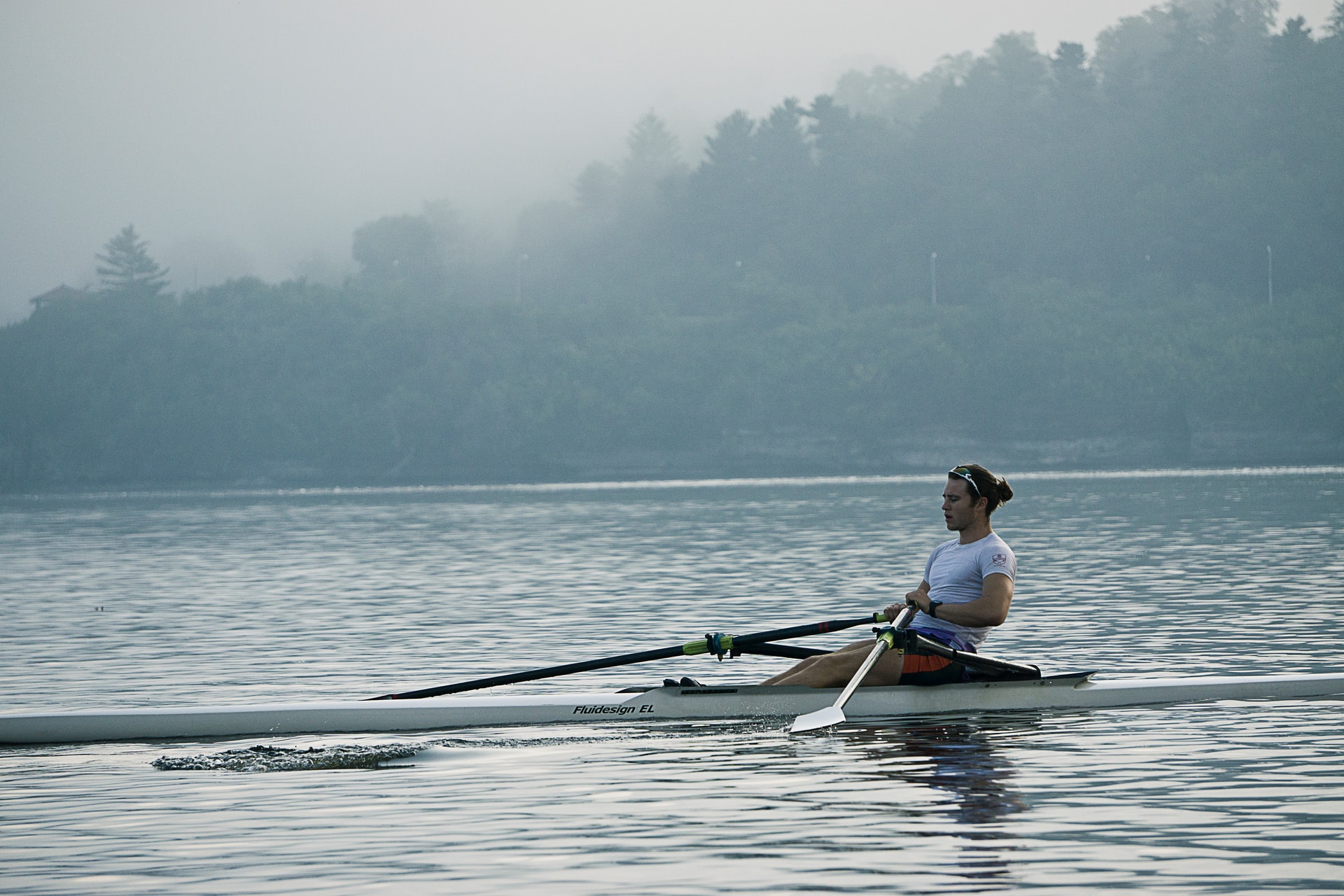
Kayaking Vs. Rowing: What’s the Difference? (8 Key Differences)
-
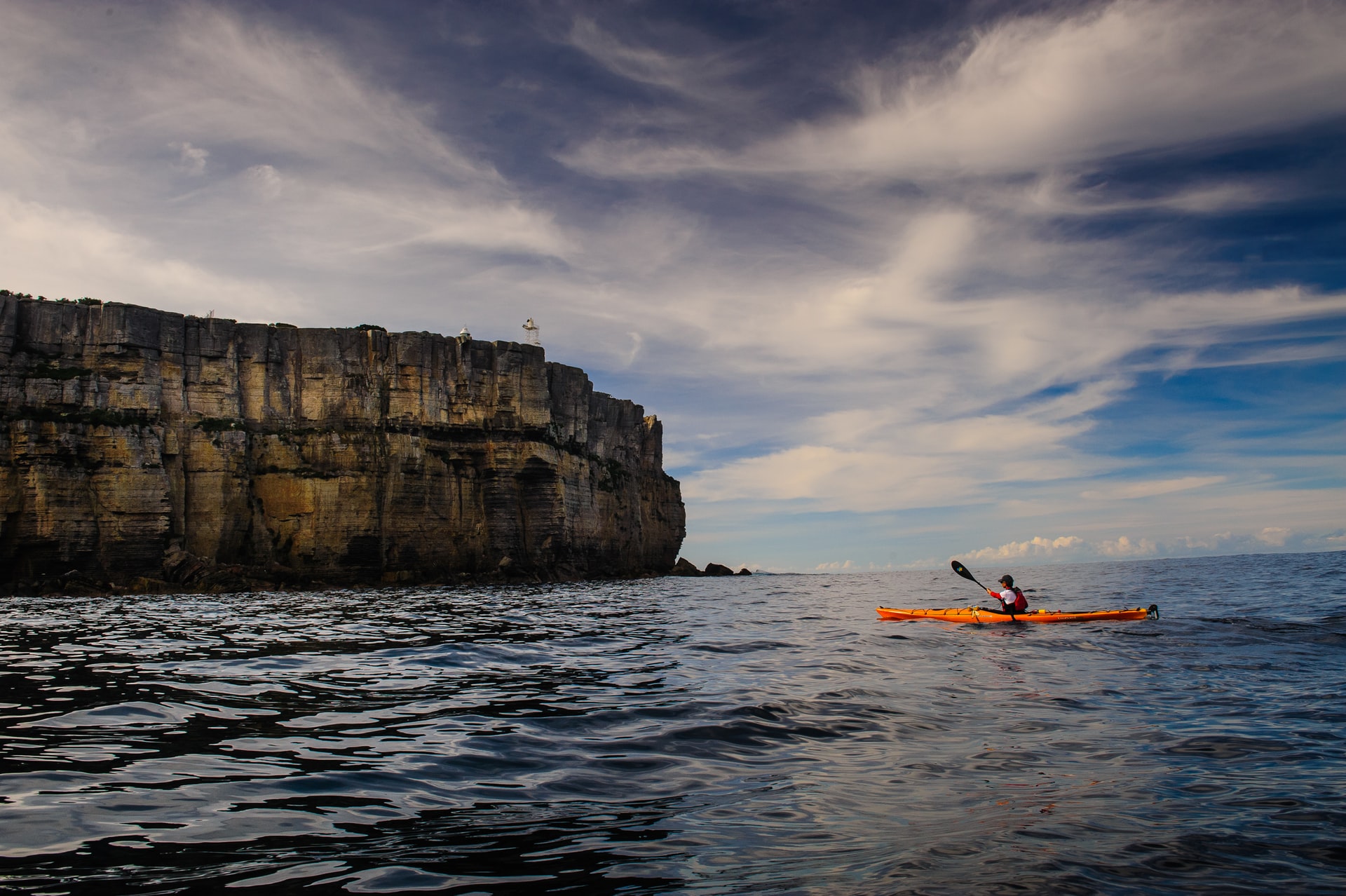
When Is It Too Windy for Kayaking? (Crucial Facts You Should Know)
-
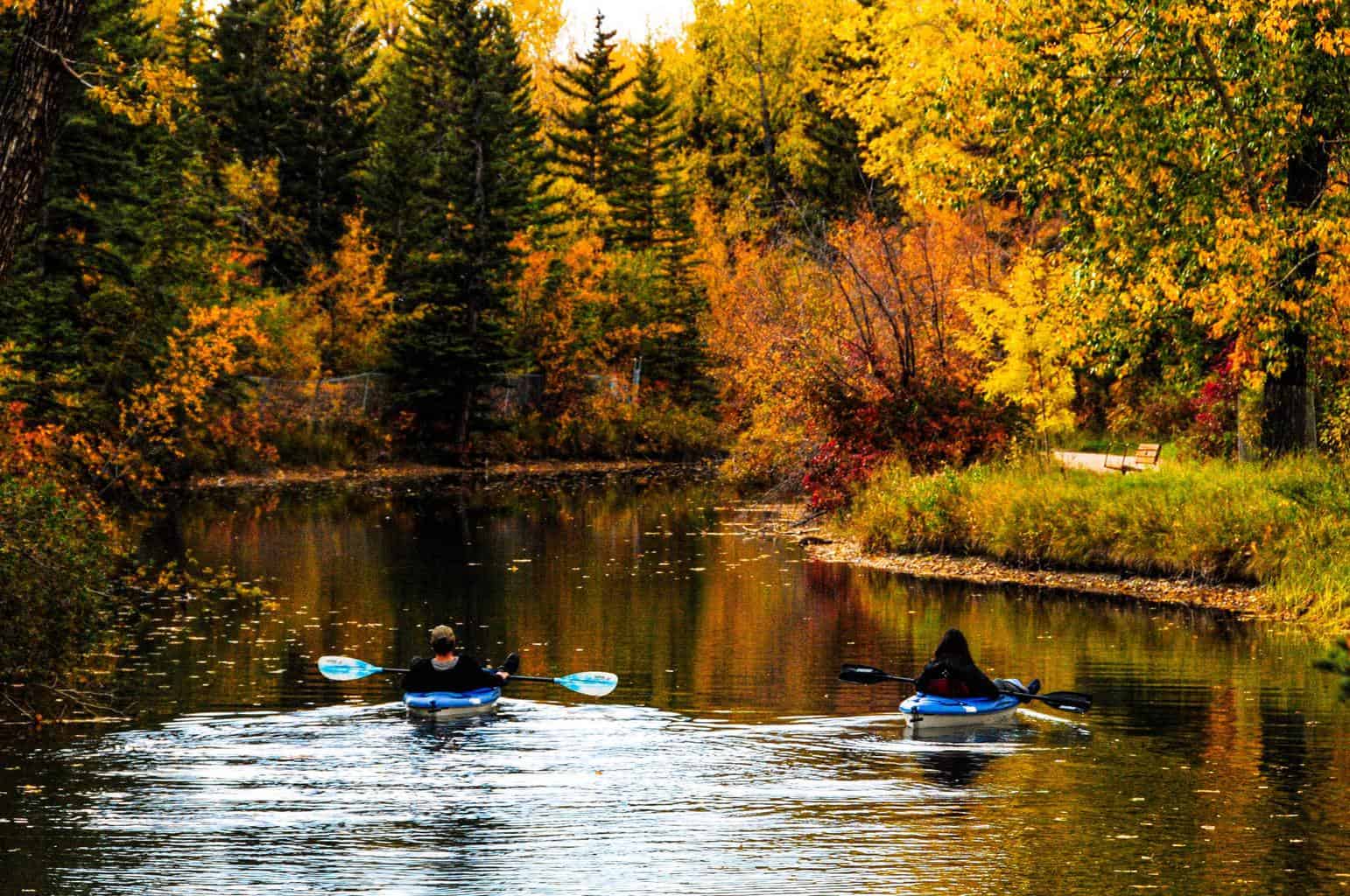
When to Go Kayaking? (What Every Kayaker Should Know)
-
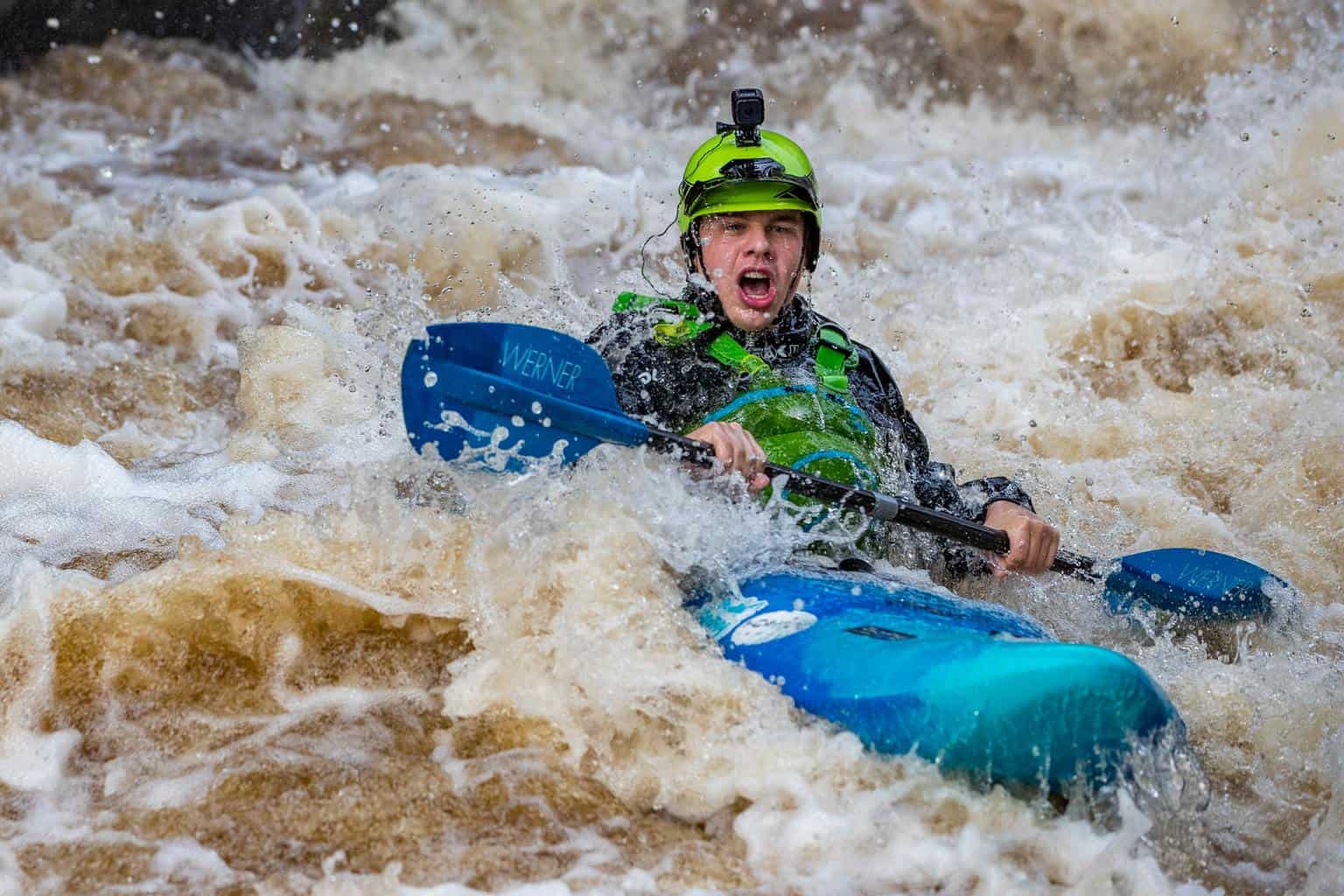
Will I Get Wet Kayaking? (Common Reasons & How to Stay Dry)
-
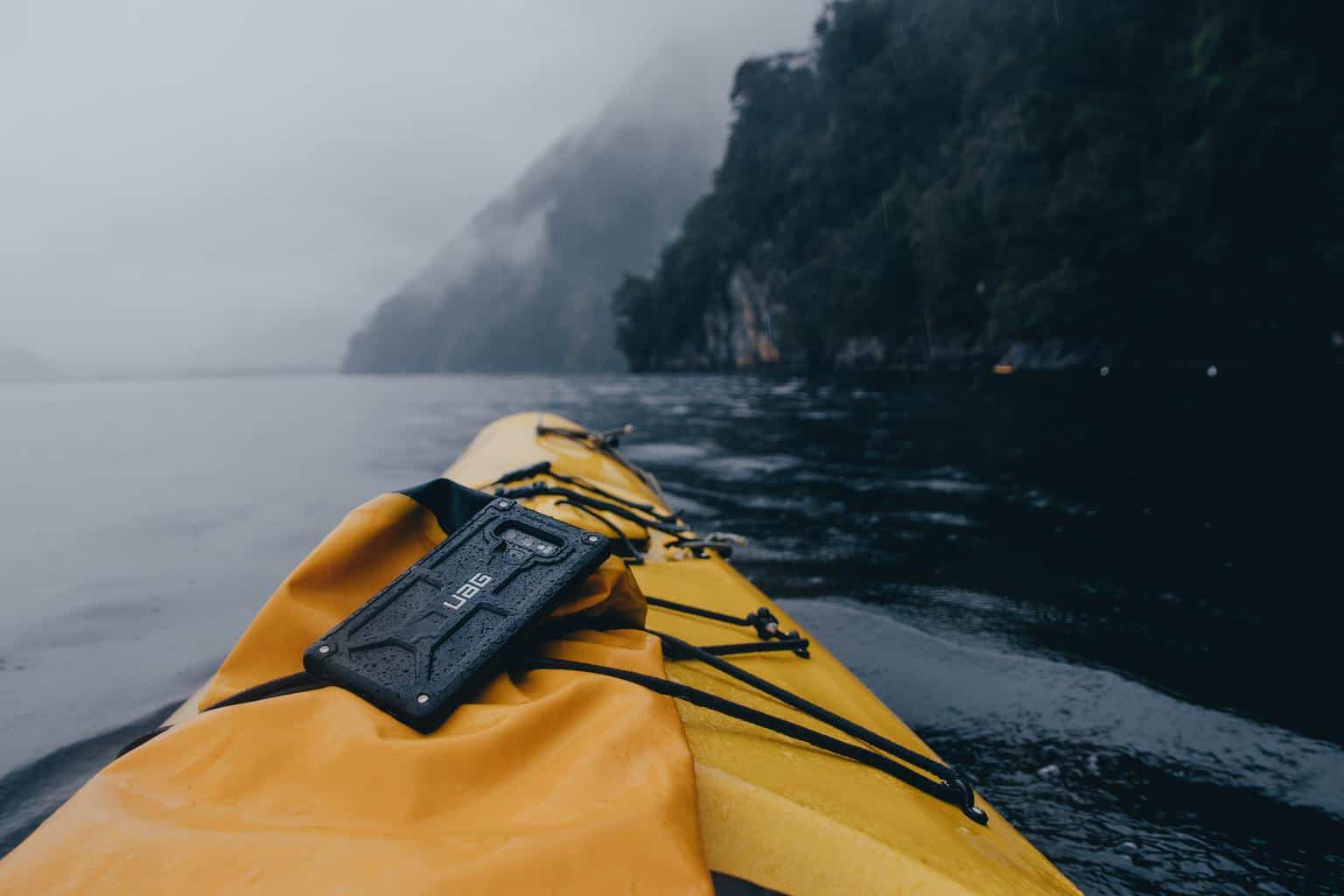
Should I Bring My Phone Kayaking? (7 Good Reasons)
-
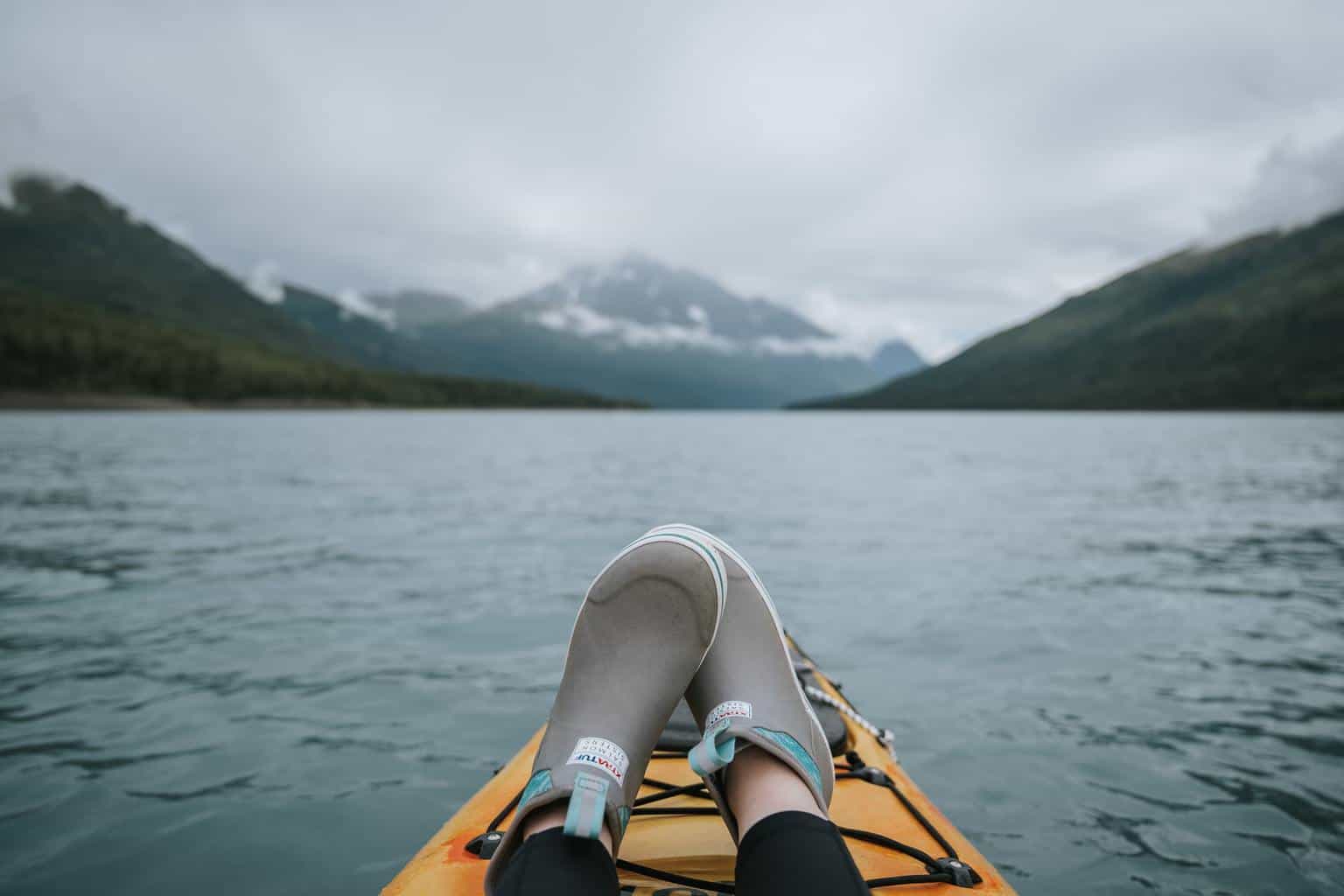
What Shoes to Wear Kayaking? (+ the Best Shoes for Your Needs)
-
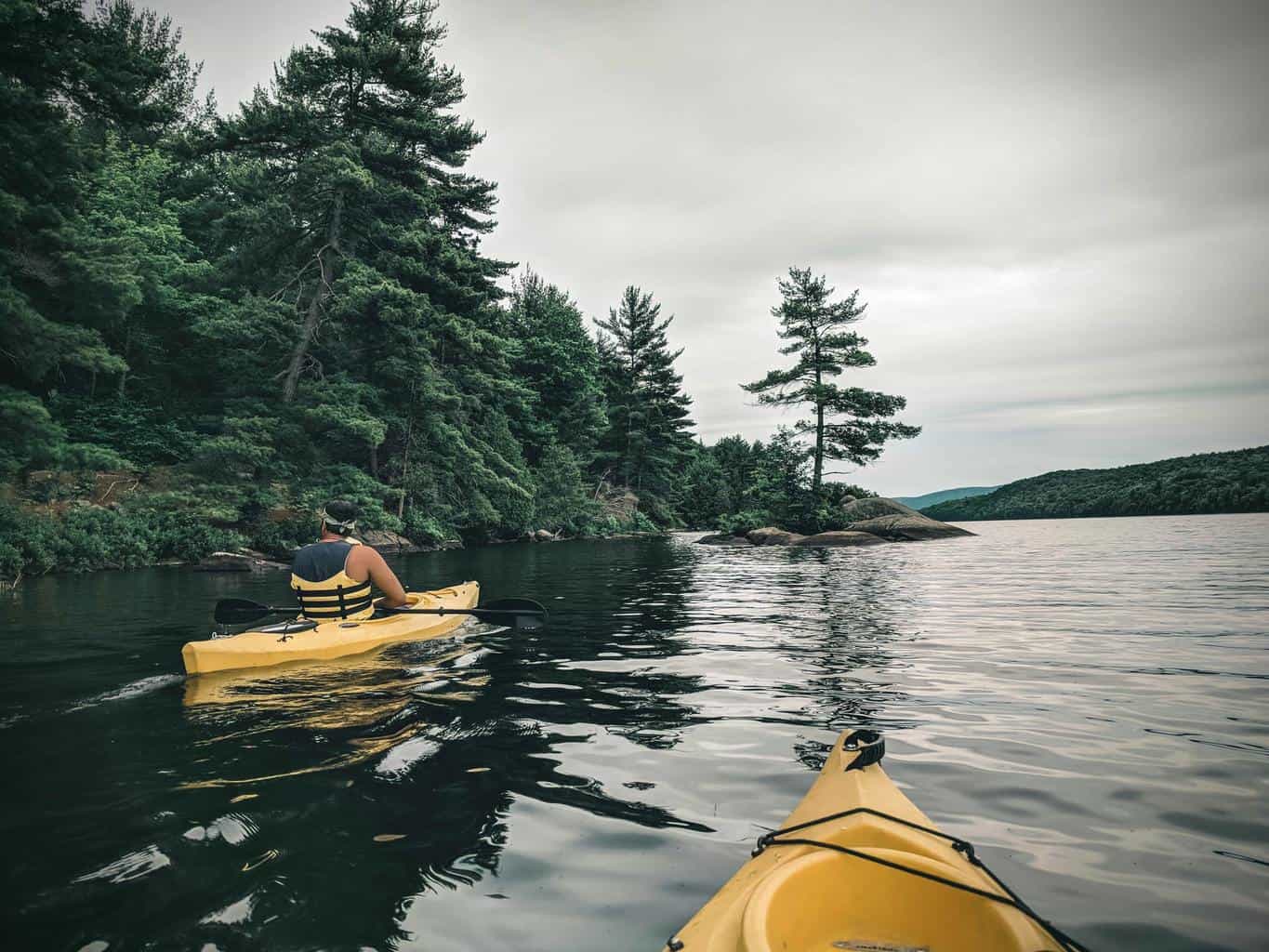
Can Kayaking Cause Chest Pain? (What Every Kayaker Should Know)
-
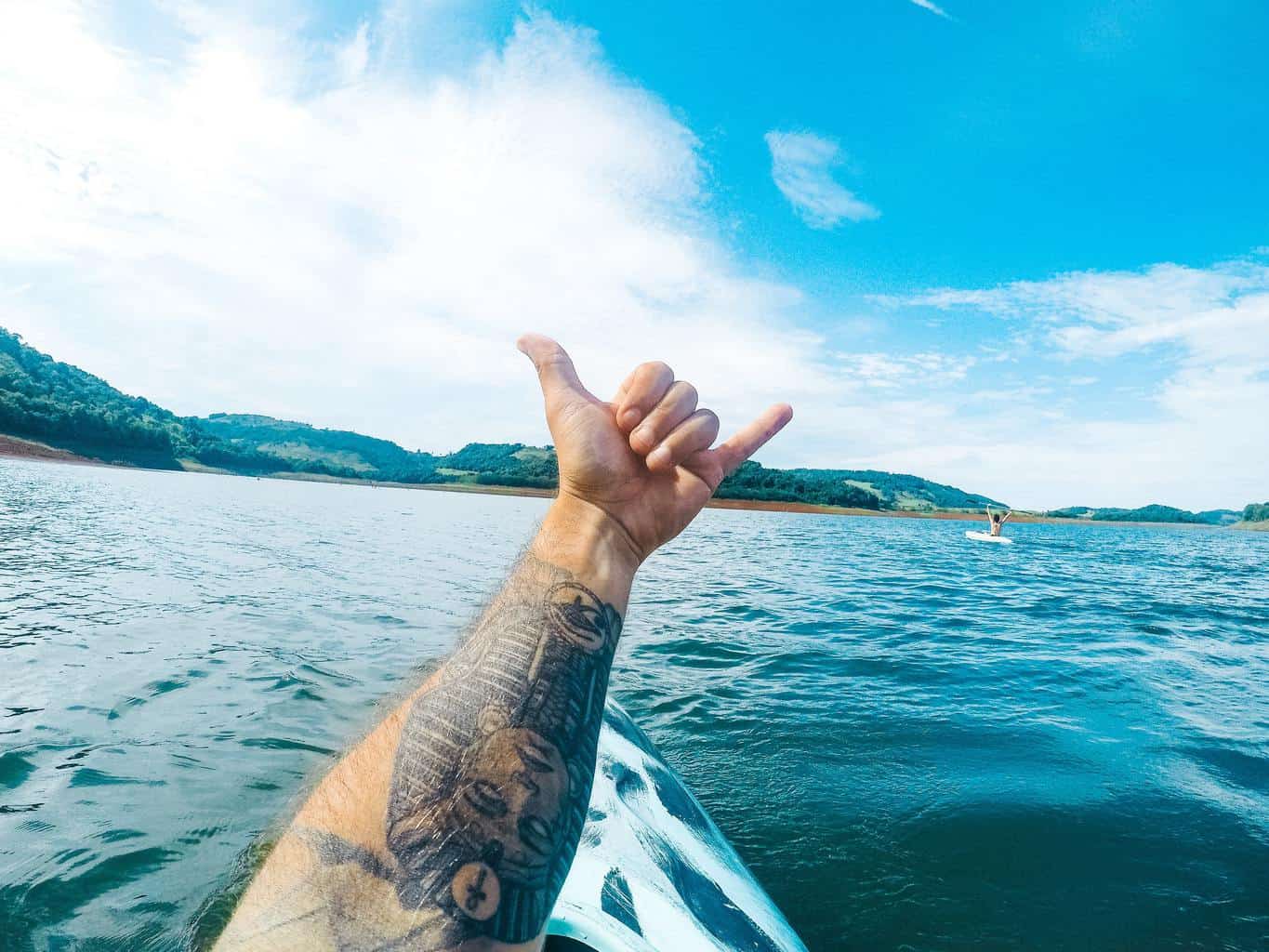
Can I Go Kayaking With a New Tattoo? (Facts You Should Know)
-
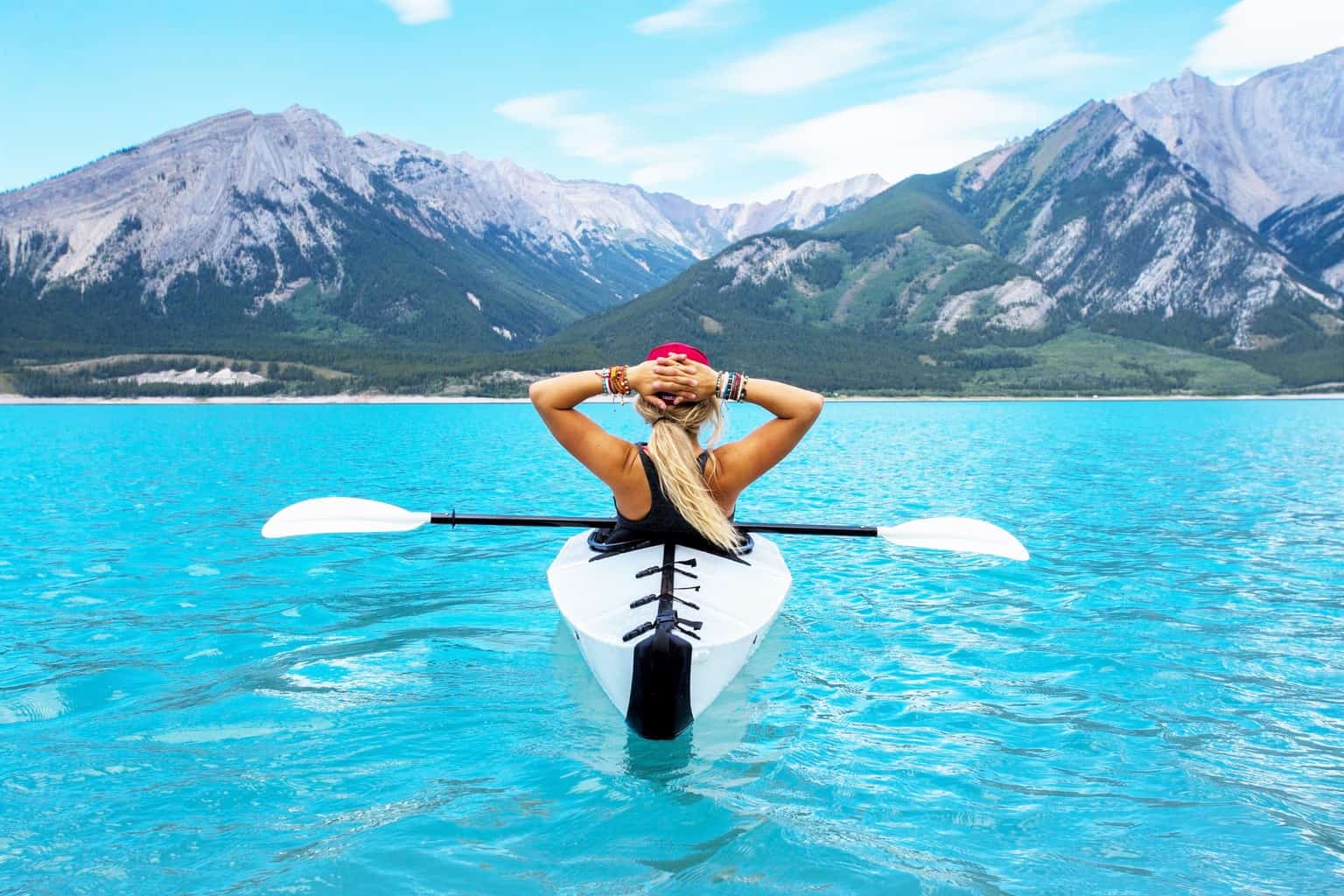
Can You Go Kayaking On Your Period? (+Practical Tips)
-
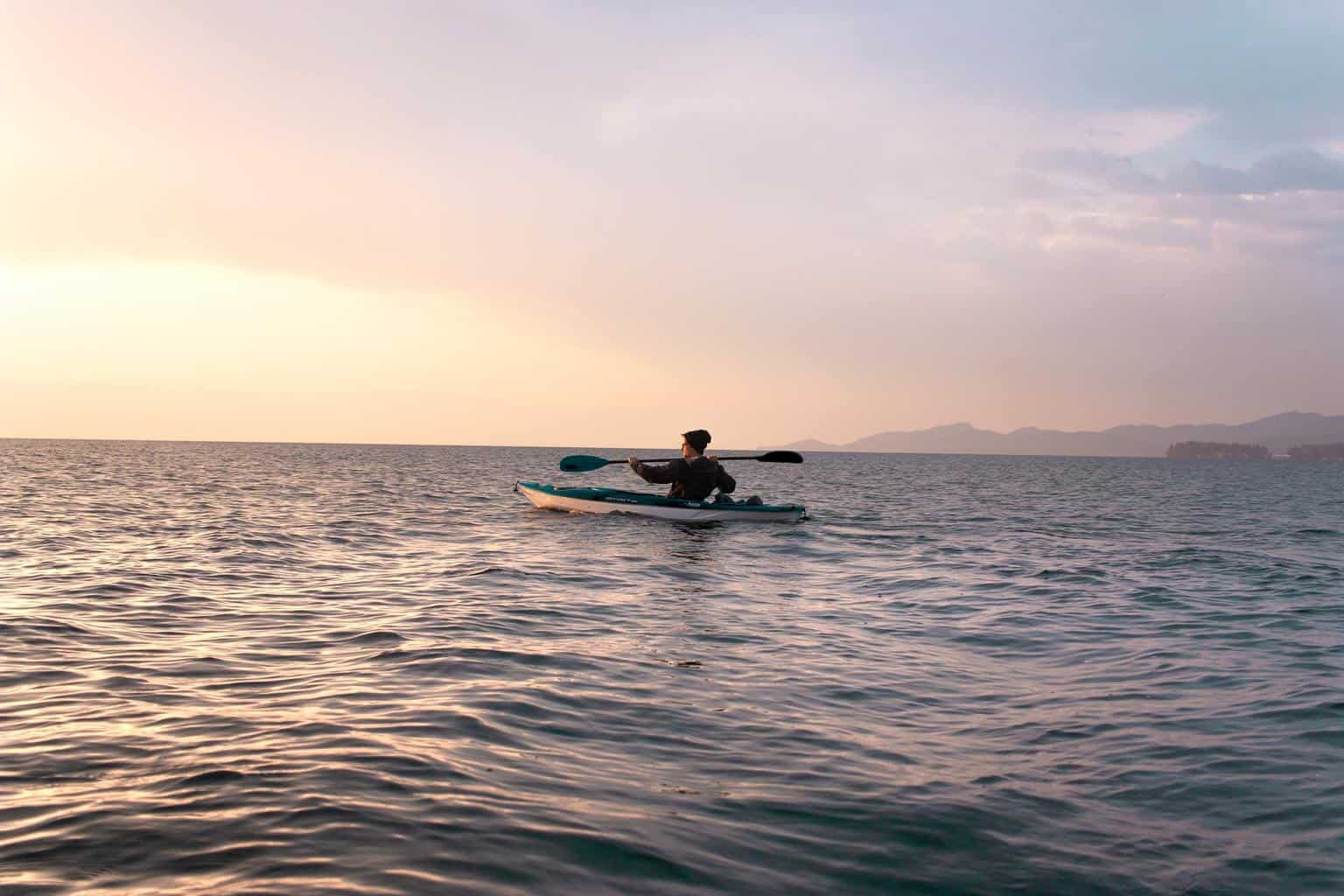
Can Kayaking Cause Hemorrhoids? (What Every Kayaker Should Know)
-
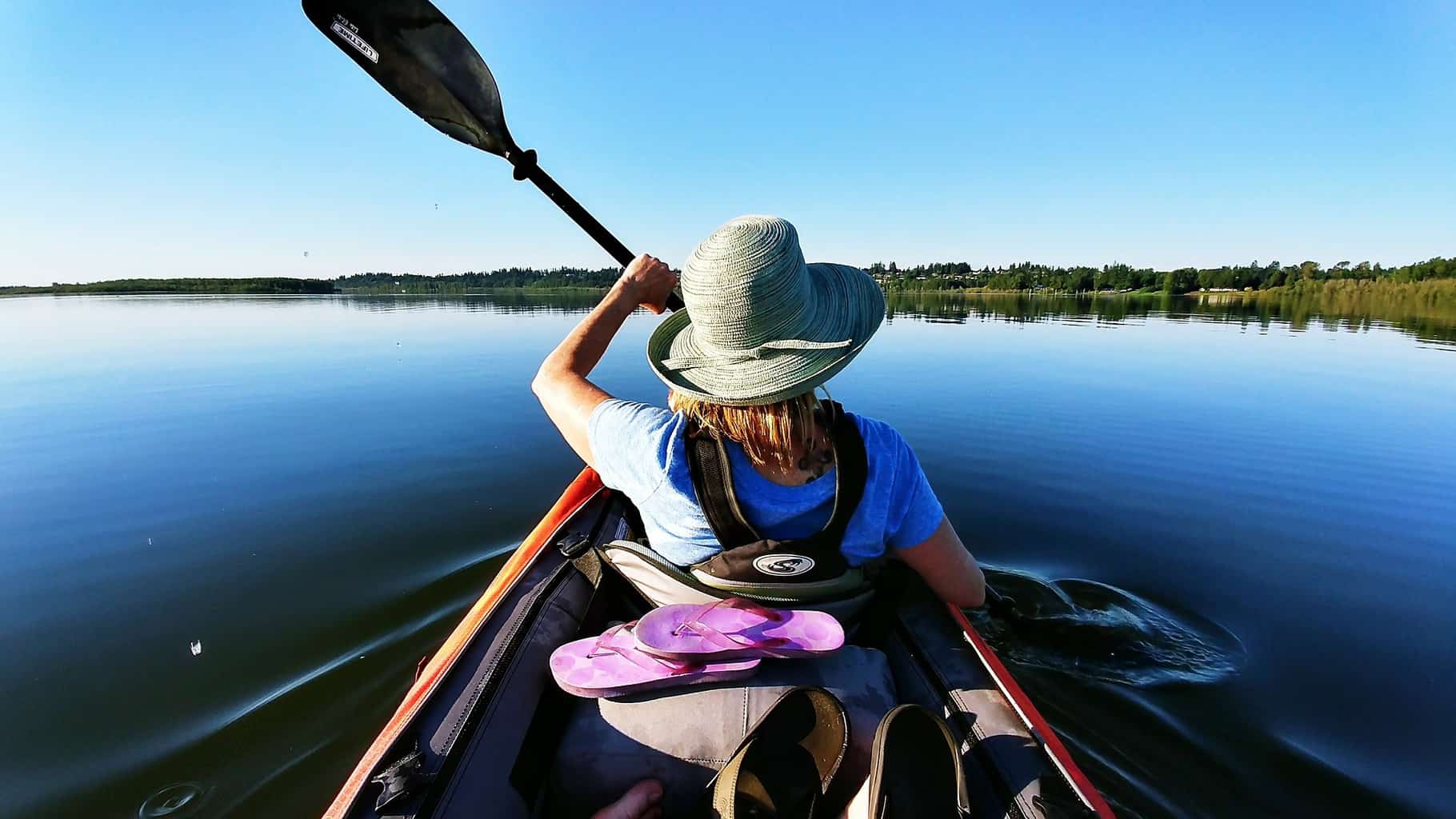
Can Kayaking Cause Tennis Elbow? (+8 Simple Tips to Avoid It)
-
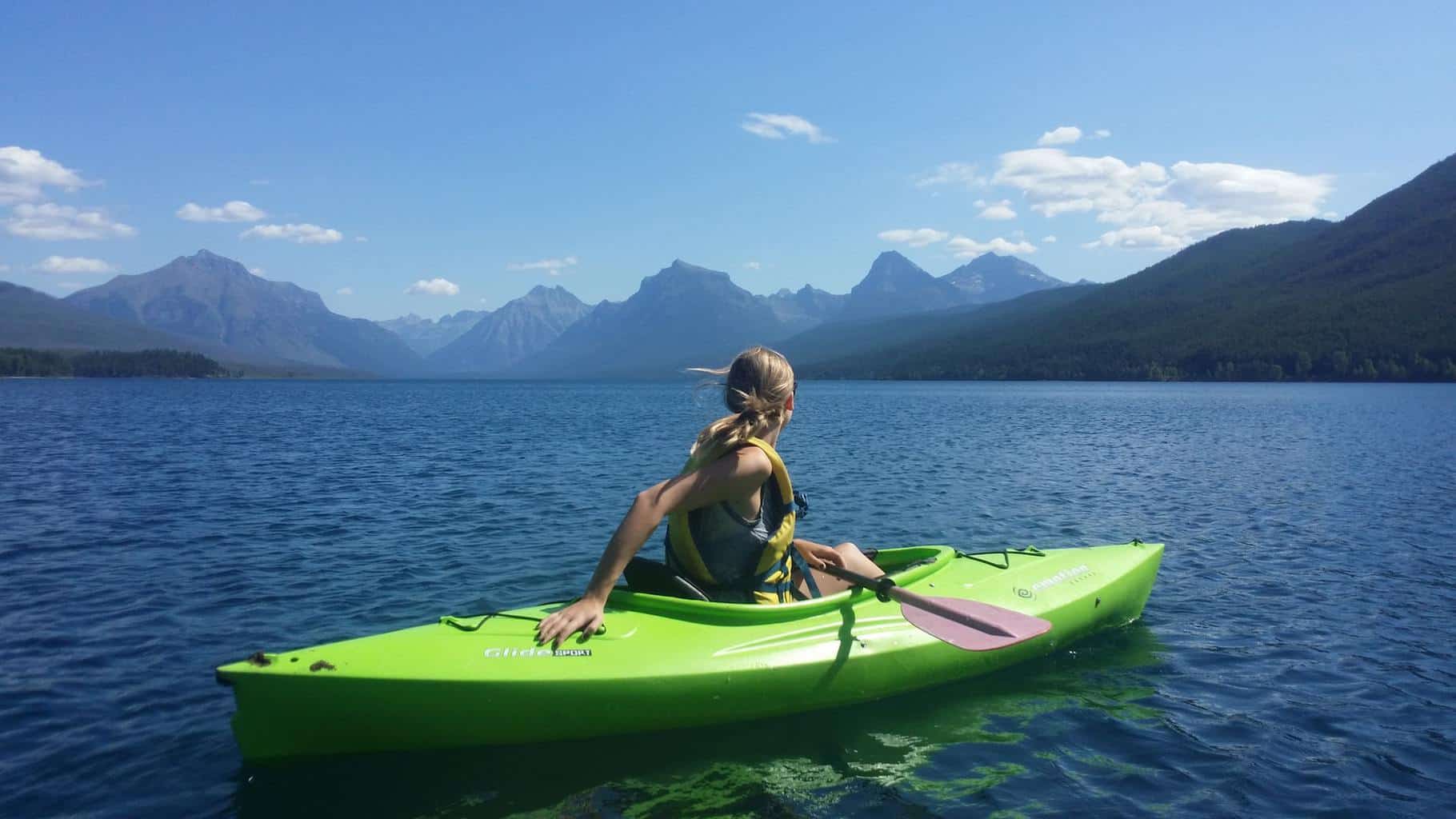
Can Kayaking Cause Sciatica? (+7 Tips to Avoid It)

